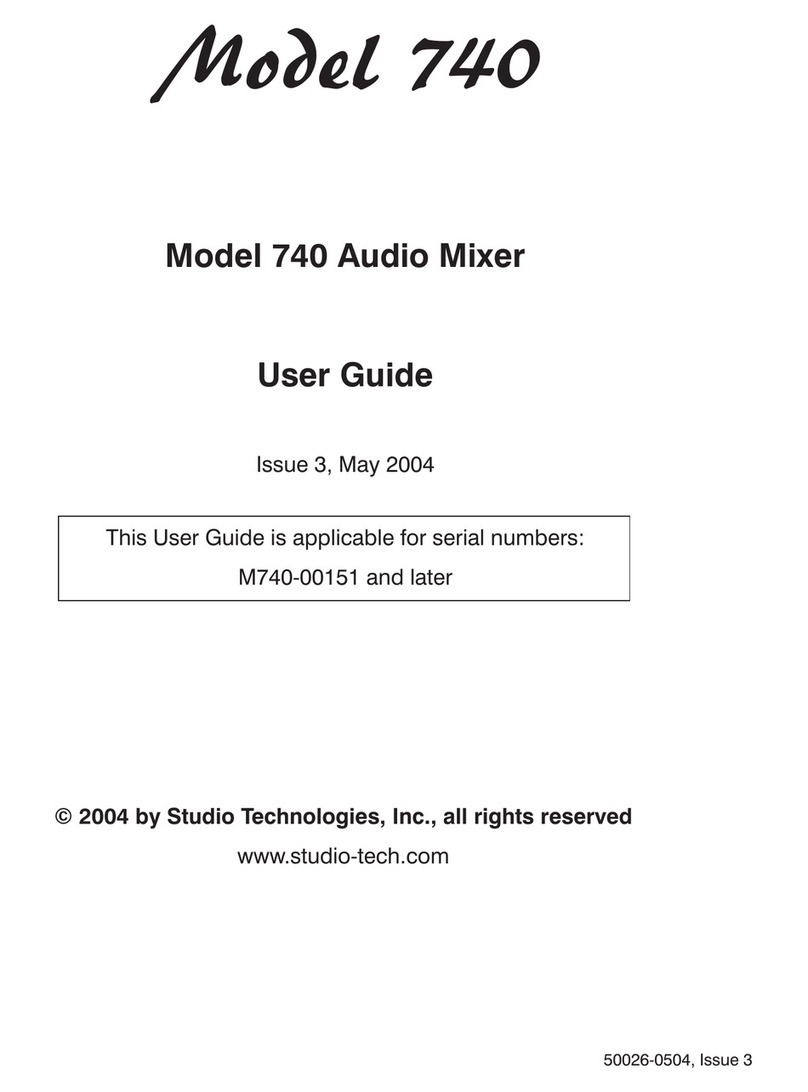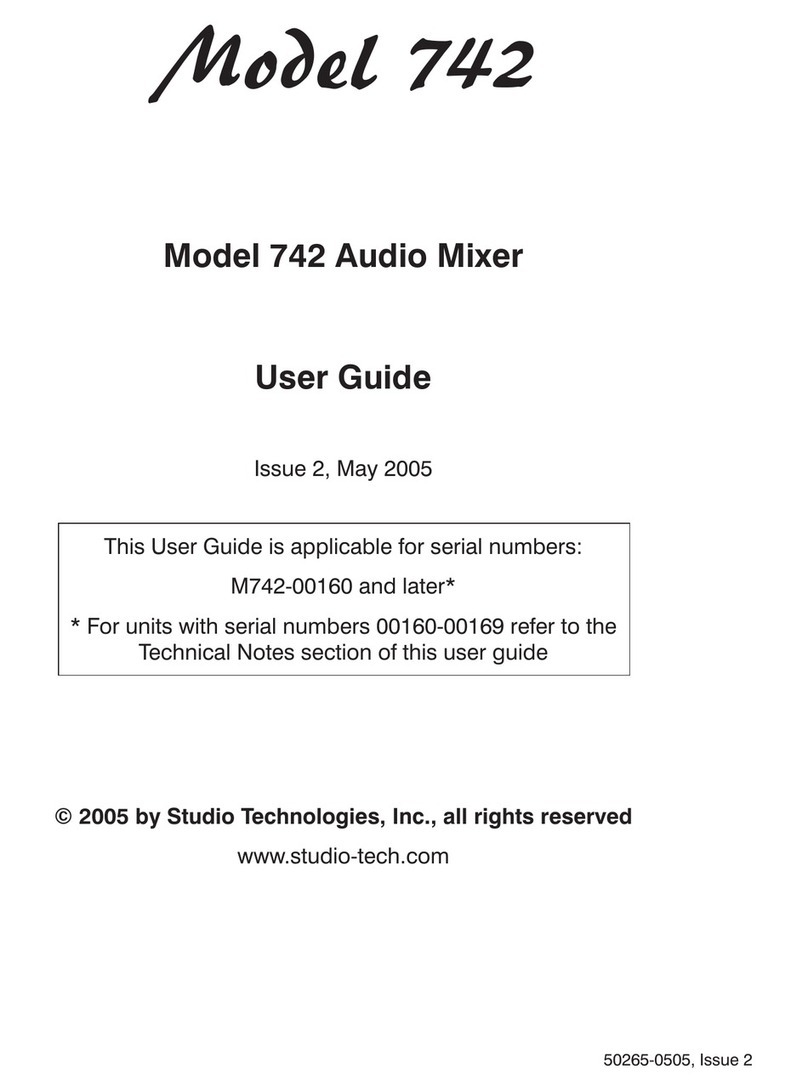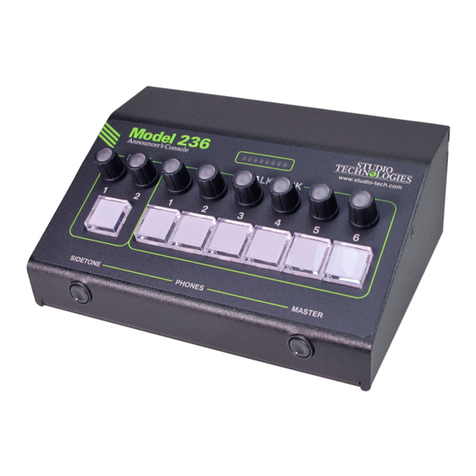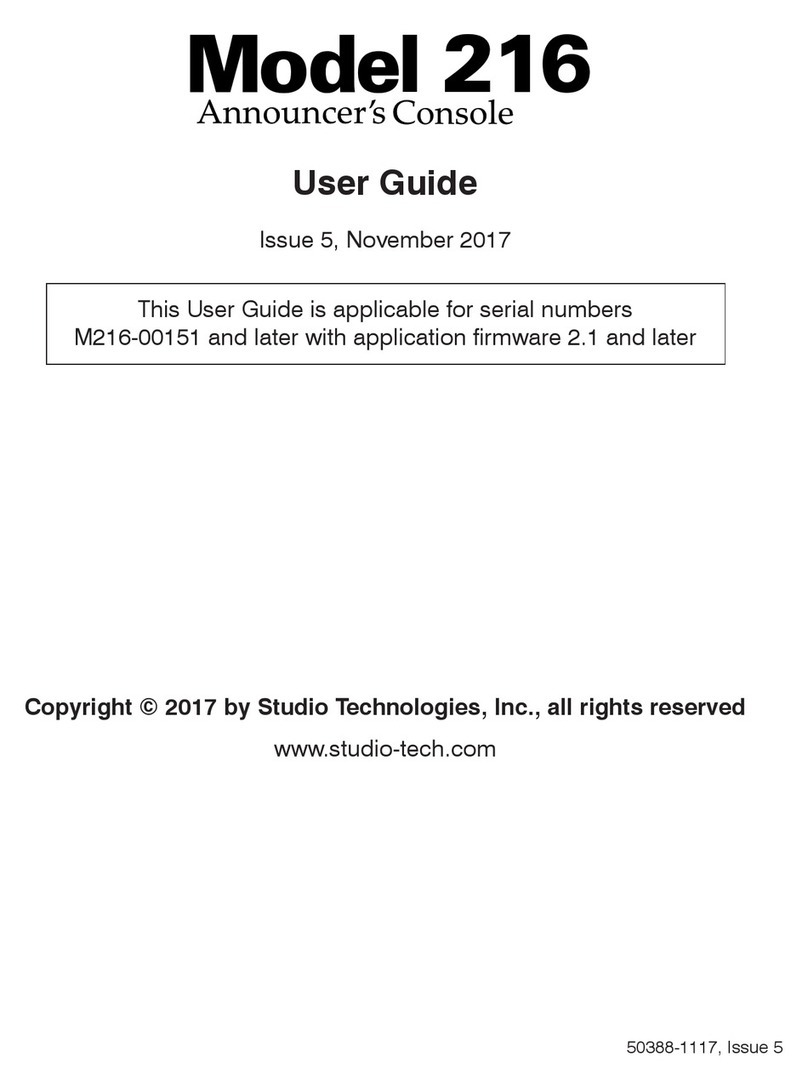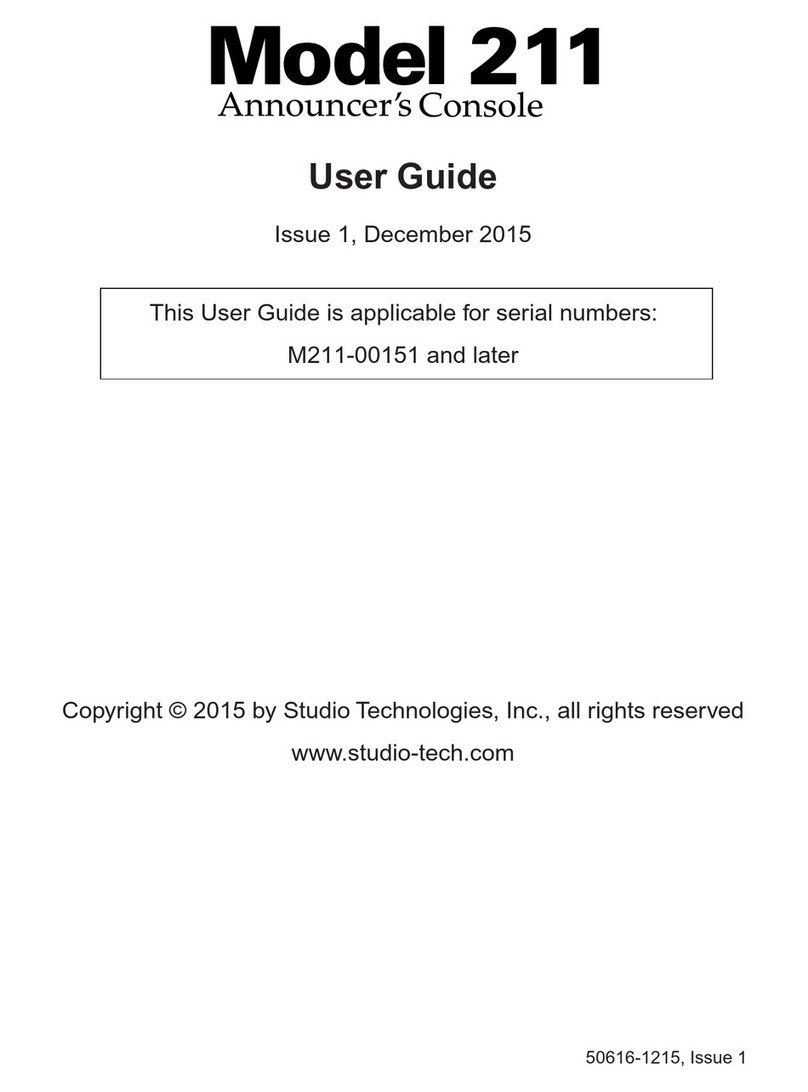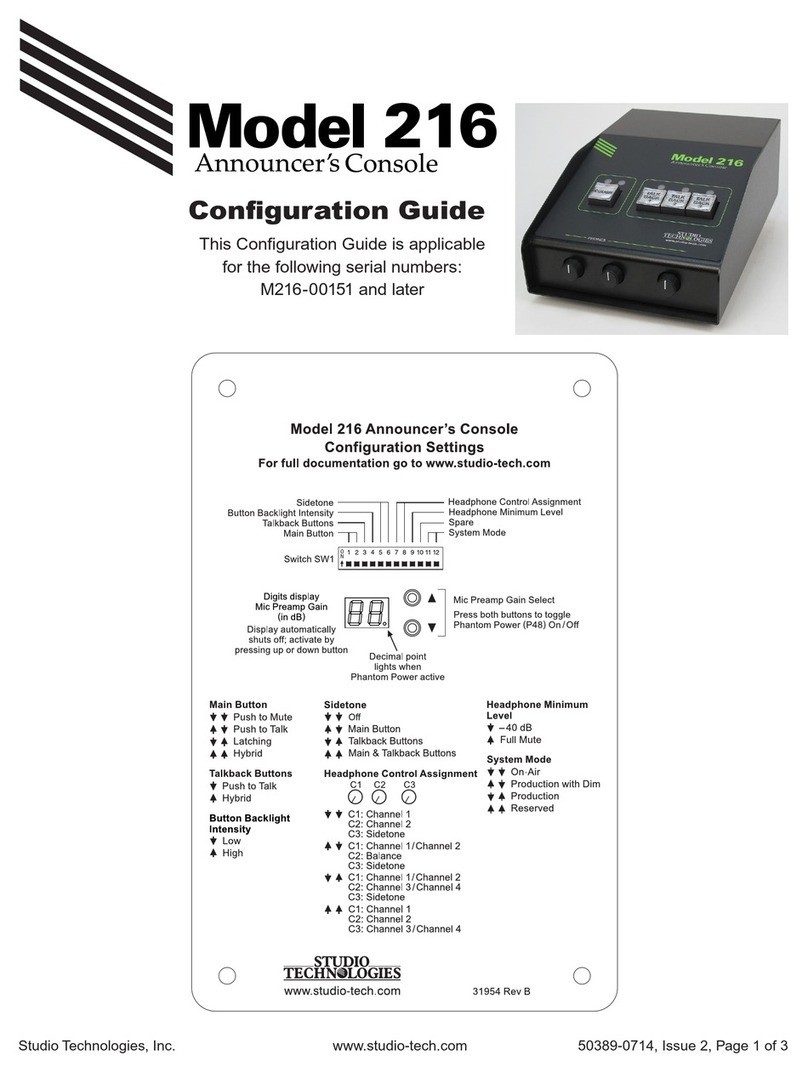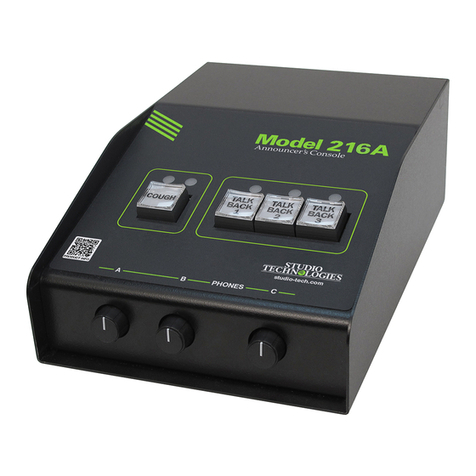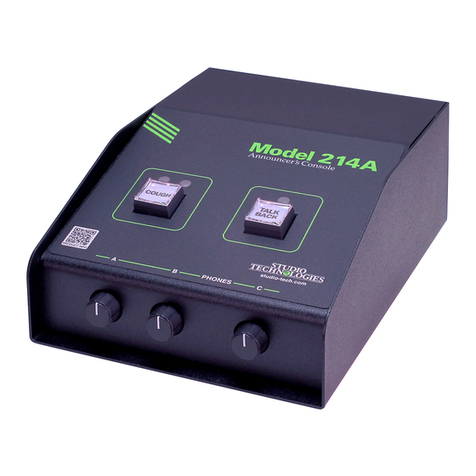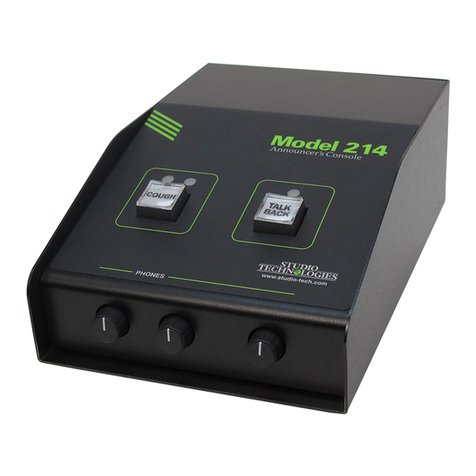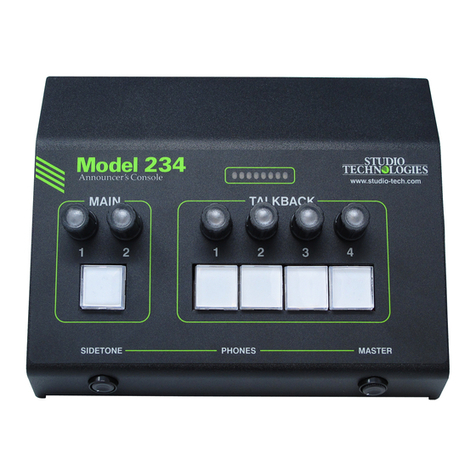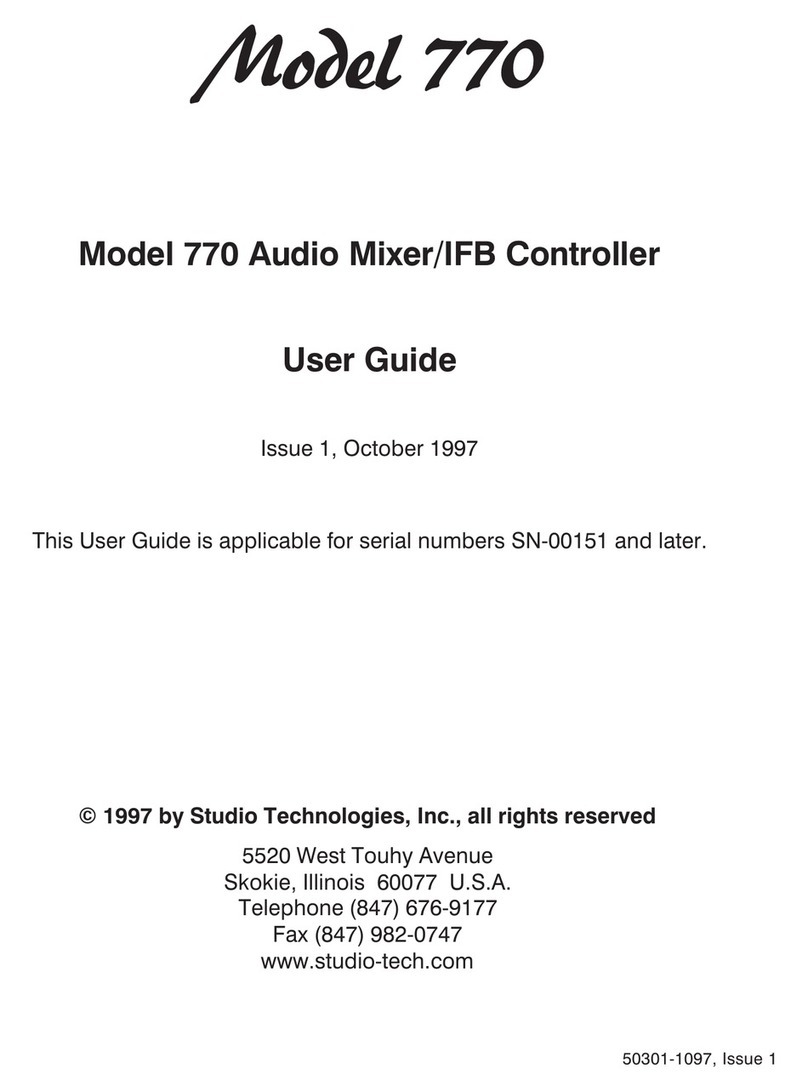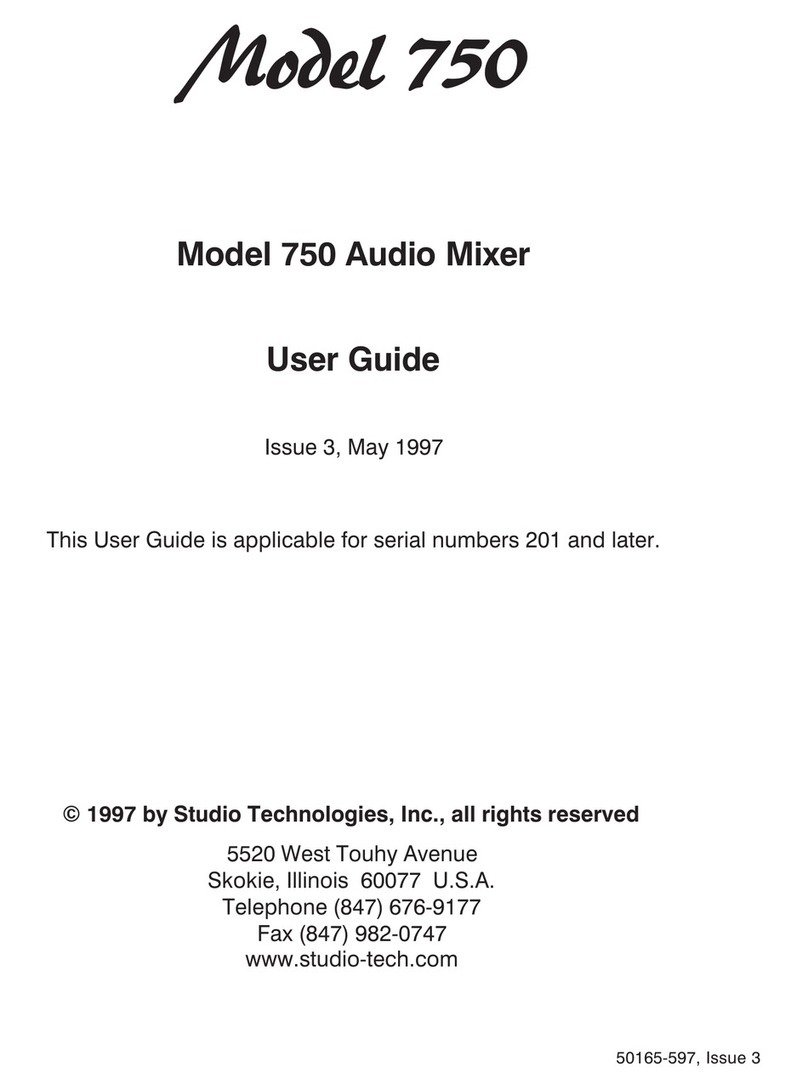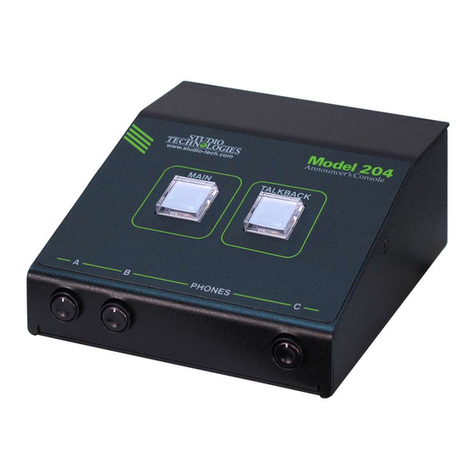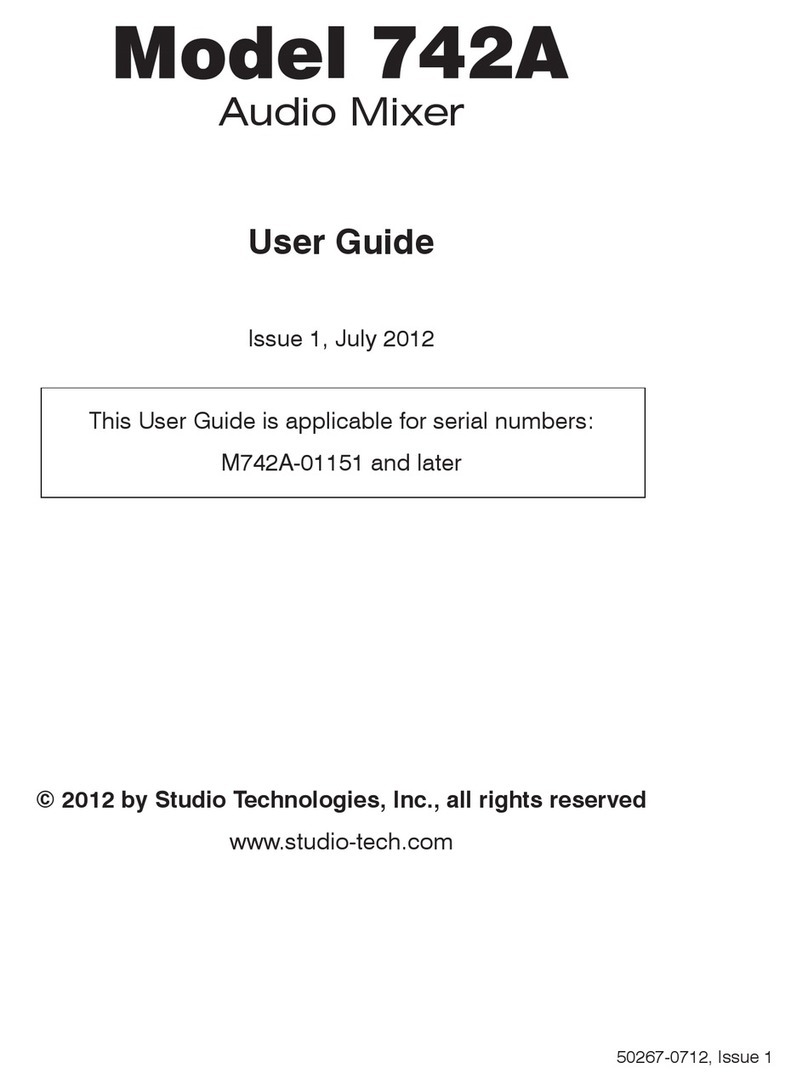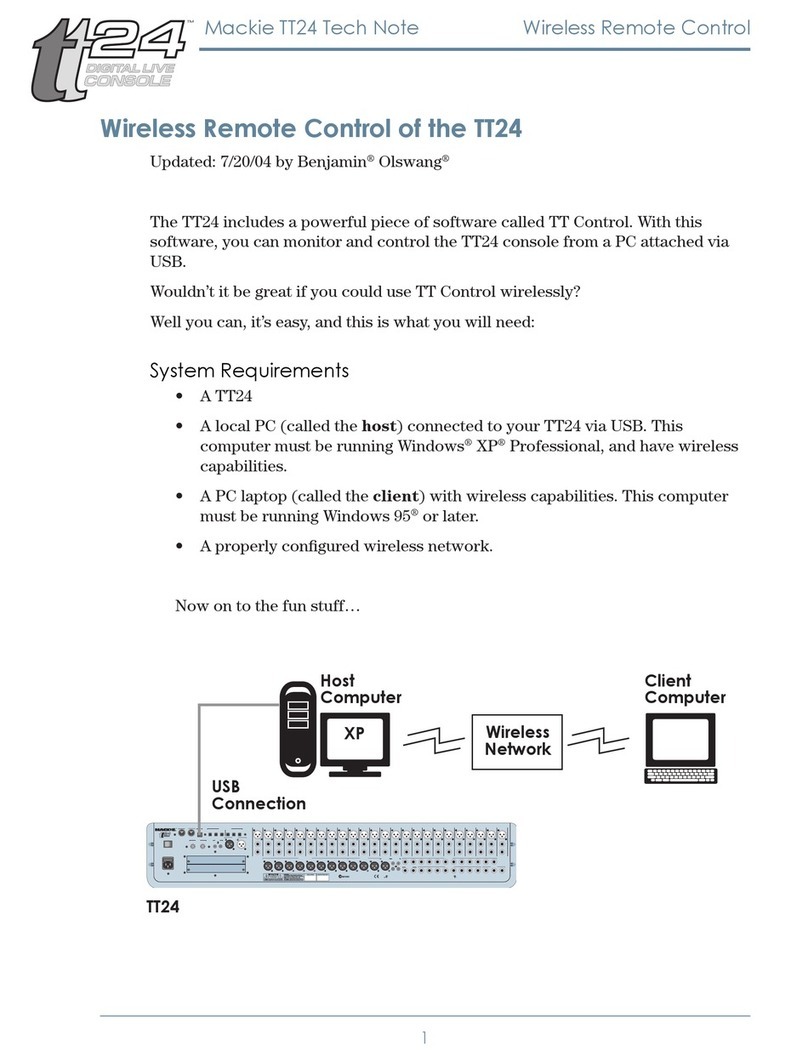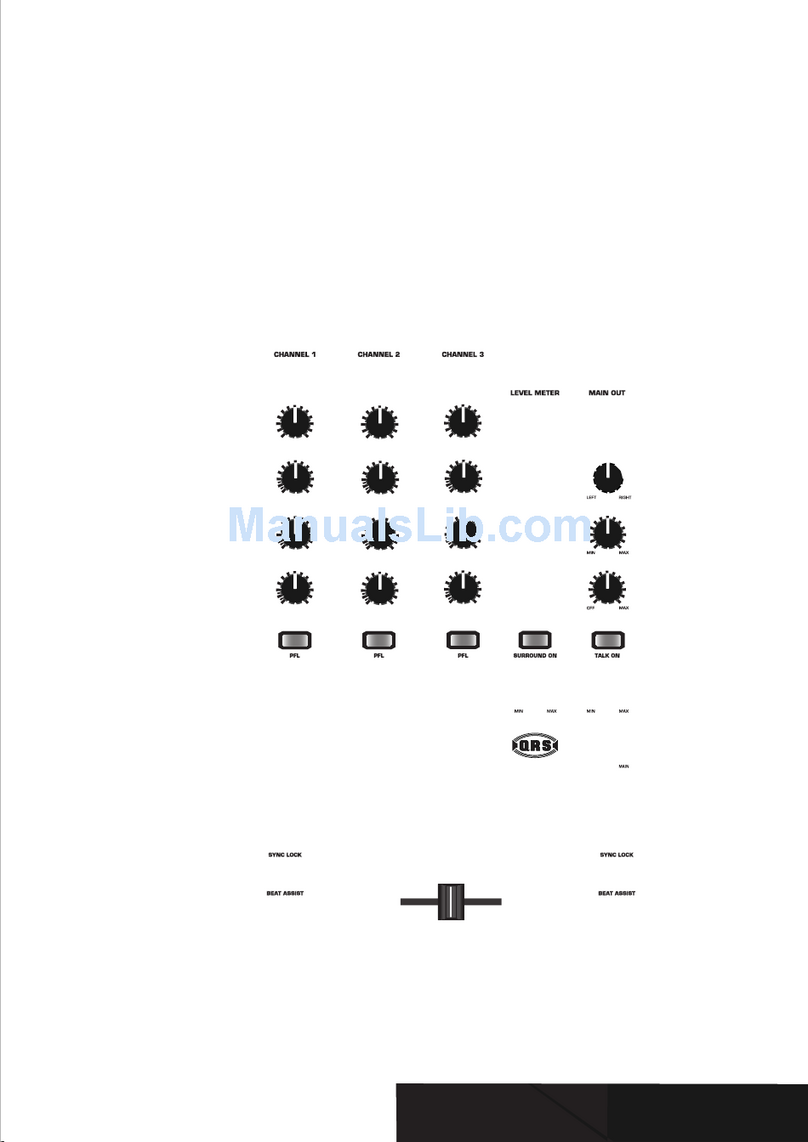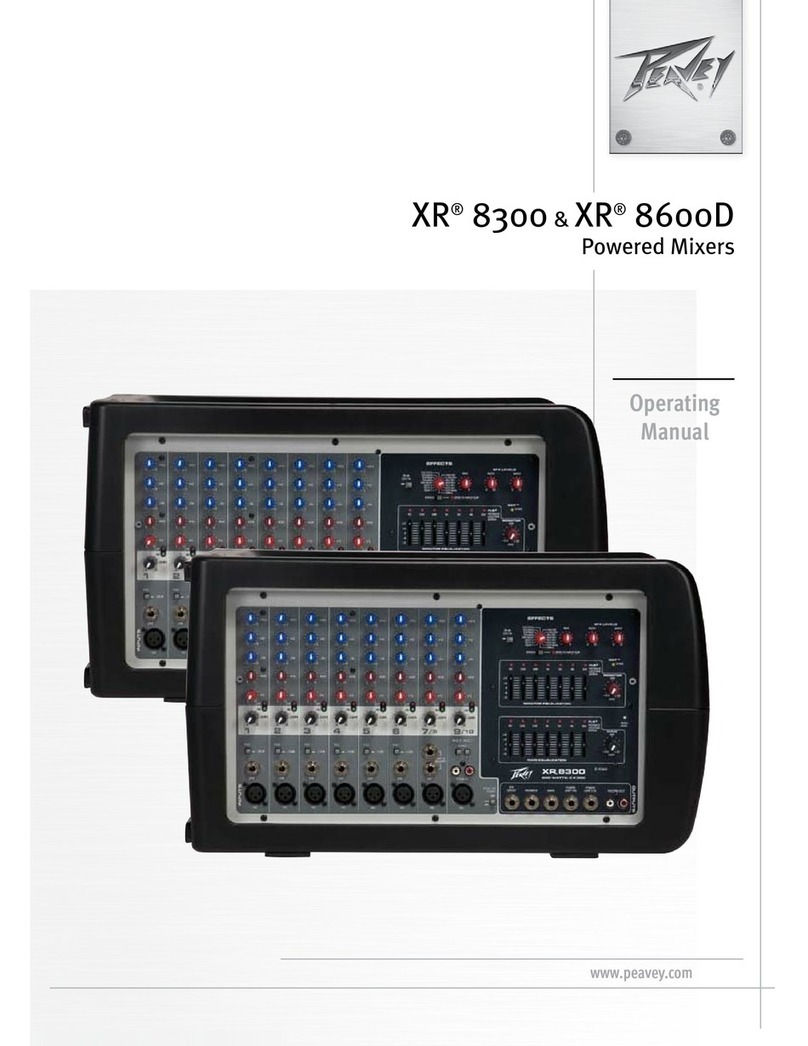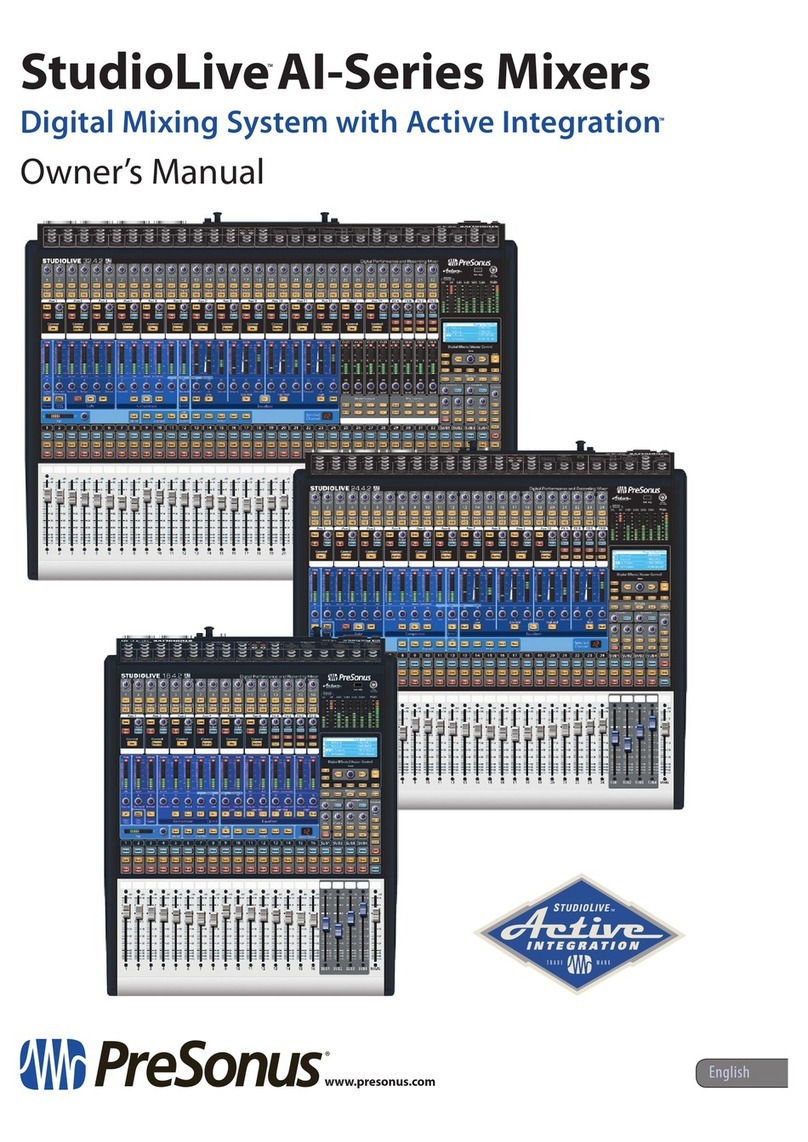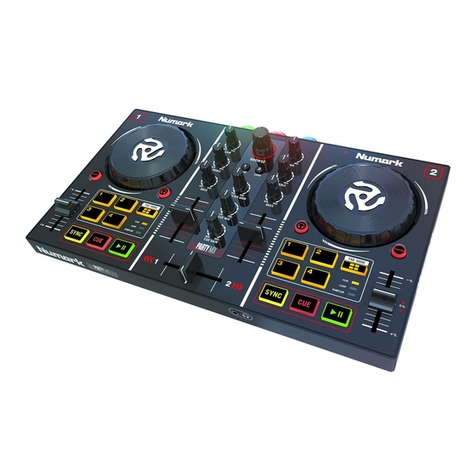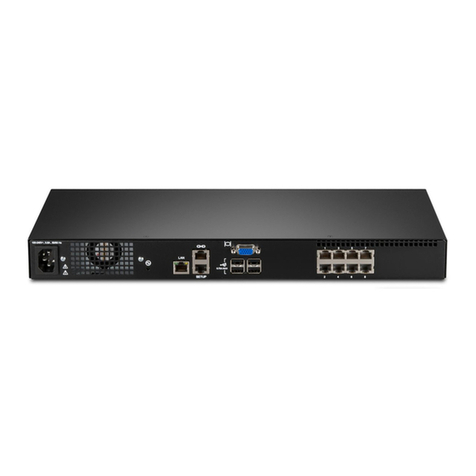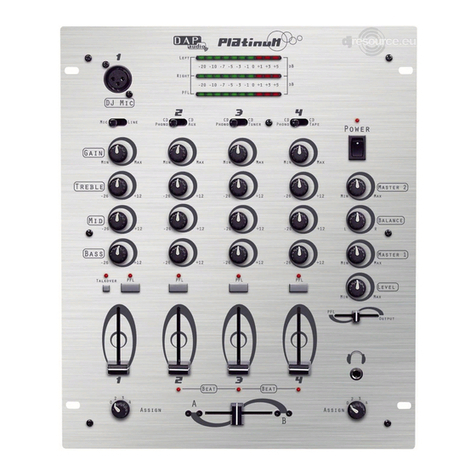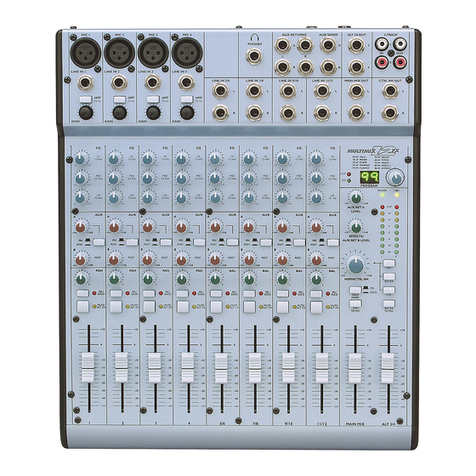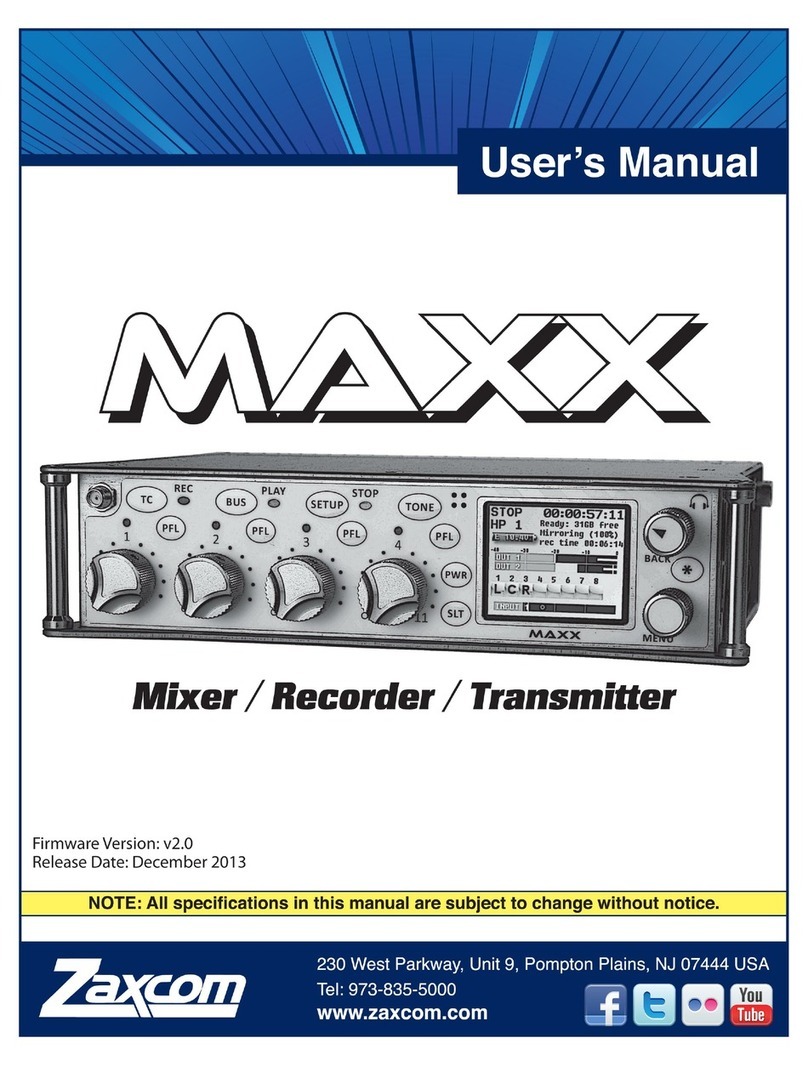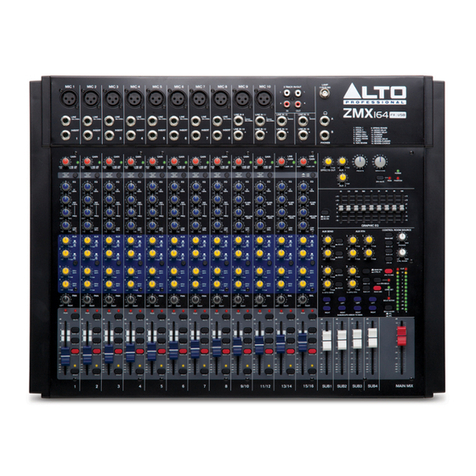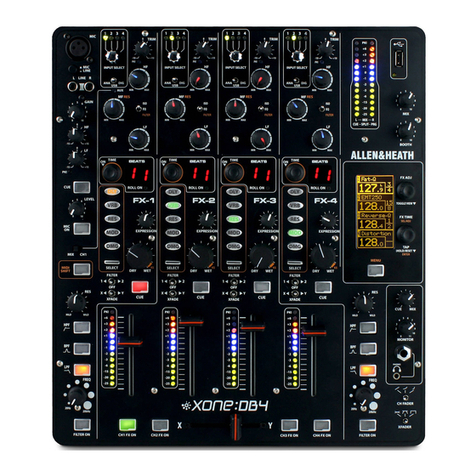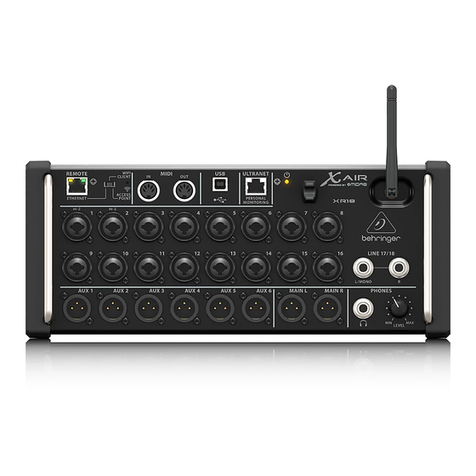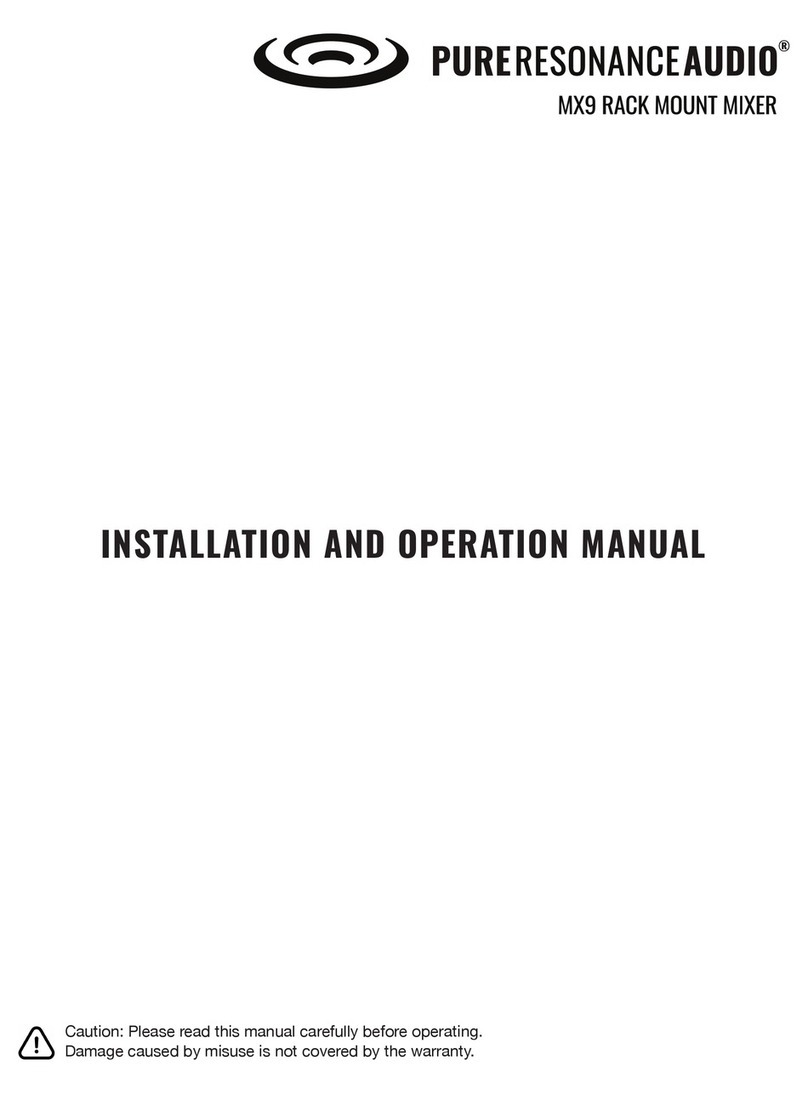
Model 207 User Guide Issue 1, May 2019
Studio Technologies, Inc. Page 7
MODEL 207
eSPORTS CONSOLE
The Model 207 is compatible with the AES67
interoperability standard. In addition, the unit
is compatible with the Dante Domain Man-
ager™ (DDM) software application.
Audio Quality
The Model 207’s audio performance is
completely “pro.” A low-noise, wide dynamic-
range microphone preamplifier and asso-
ciated voltage-controlled-amplifier (VCA)
dynamics controller (compressor) ensures
the headset’s microphone audio quality is
preserved while minimizing the chance of
signal overload. The output of the micro-
phone preamp and compressor is routed to
an analog-to-digital conversion (ADC) sec-
tion that supports sampling rates of 44.1
and 48 kHz with a bit depth of up to 24.
The audio signal, now in the digital domain,
routes through a 32-bit microprocessor and
on to the Dante interface section where it is
packetized and prepared for transport over
Ethernet.
Audio input signals arrive via the four Dante
receiver channels and pass into the Model
207’s microprocessor. The supported sam-
pling rates are 44.1 and 48 kHz with a bit
depth of up to 24. Channel routing, head-
phone level control, and sidetone creation
are performed within the digital domain. This
provides flexibility, allowing precise control
and keeping the three level potentiometers
from having to directly handle analog audio
signals. The audio channels destined for
the phones outputs are sent to a high-
performance digital-to-analog converter
and then on to robust driver circuitry. High
signal levels can be provided to the connect-
ed headset or earbuds with microphone.
Configuration Flexibility
The Model 207 can be configured to meet
the needs of specific applications and user
preferences. All configuration choices are
performed using the STcontroller software
application which is compatible with version 7
and later of the Windows operating systems.
Selectable parameters include microphone
preamplifier gain, microphone power source
on/off, button operation, headphone source
routing and control operation, sidetone opera-
tion, and overall unit operation. In addition,
the intensity of the LED indicators can be
configured as desired. The gain of the micro-
phone preamplifier can be selected from
among five choices. This allows the Model
207 to match the output sensitivity of a range
of headset-associated microphones. A source
of low-voltage DC power can be enabled if
required to support electret microphones.
The main and talkback pushbutton switches
can be individually configured. The main but-
ton can be selected to operate from among
six modes while the talkback button can be
selected from among four. These choices al-
low the Model 207’s operation to be tailored
to meet the specific needs of many applica-
tions. As an example, for an on-air application
the main button might need to be configured
to provide a push to mute (cough) function.
The microphone signal routed to the Dante
main output channel would remain active
unless a game player needs to momentarily
disable it. The talkback button would most
likely be set to the push to talk mode as its
use would be intermittent.
The audio sources and the way in which
they are assigned to the headphone output
channels and front-panel rotary controls can
be configured from among many choices.
Each choice is unique, allowing almost any
required headphone monitoring situation to
be implemented.
The integrated sidetone function allows audio
associated with the microphone input to be
sent to the headphone output. This is impor-
tant as different applications may provide




















